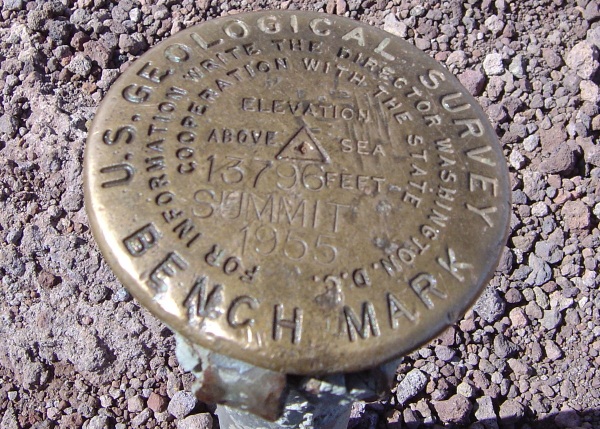Impact investors are a tough crowd. For years, proponents have called for more data on impact fund performance and comparable returns to give investors better visibility into the real results of investments intended to generate social and environmental as well as financial benefits.
But no sooner had the Global Impact Investing Network and Cambridge Associates released the first such benchmark for impact fund performance than came the inevitable parsing of their valiant first effort. The data’s too sparse. The comparables are crazy. What about impact?
The benchmark, by the way, appeared to show that market-rate, and even outperformance, returns in the young sector are possible, especially for older, smaller, and emerging market funds. ImpactAlpha caught up with Amit Bouri, the GIIN’s new CEO, and David Sternlicht of Cambridge Associates to dig deeper.
ImpactAlpha: Why an impact investing benchmark now?
Amit Bouri: As the first employee of the GIIN I’ve seen our network grow from 20 members to over 200. In the last five years we’ve also seen that the number of those investors that want to get in the game has grown dramatically. For those sitting on the sidelines, a number of things stand in the way, one of which is feeling comfortable that they can have an impact and get the returns that they need.
[blockquote author=”Amit Bouri, CEO, Global Impact Investing Network” pull=”pullleft”]The benchmark is part of a broader effort to shed light on the opaque impact investing market. The story is just beginning.[/blockquote]
We have membership in 30 countries. The same questions come up everywhere we go. One of the first questions potential impact investors ask is: is this a market or just a handful of funds that everybody’s heard of? We’ve built ImpactBase, an online directory of impact investing funds and products, which demonstrates there’s inventory in this market. It’s grown from 50 to over 350 funds and products.
The next question that comes up: can I actually make money? Investors want to see evidence impact investing can actually perform.
ImpactAlpha: How did you approach building the benchmark?
Bouri: We put out a call for funds to submit their data. We developed our recipient lists through credible networks including ImpactBase, ImpactAssets 50, Cambridge’s own Mission-Related Investing database, the European Venture Philanthropy Association, Opportunity Finance Network and Community Development Venture Capital Alliance to invite submissions.
We decided to target one segment to get as much commonality as possible. We targeted venture capital and private equity funds focused on social impact, aimed at producing returns on par with their non-impact, market-rate peers. We didn’t include environment-focused funds or debt funds. We targeted funds that by design are targeting market-rates of return. Not all of the funds targeting market-rate returns achieve them, and that’s the same for the general investing community.
Sixty-eight funds responded and provided financial data. Fifty-one of these were included in the analysis. Seventeen funds were too young. With time, as they deploy capital and record returns, their data will be available to add to the benchmark.
ImpactAlpha: If there’re 350 funds in ImpactBase, why didn’t the other 300 participate?
Bouri: ImpactBase includes debt and other asset class funds. It also contains environmental funds, which are not included. With our criteria we identified 138 eligible funds from the broader universe and 68 responded.
[blockquote author=”David Sternlicht, Cambridge Associates” pull=”pullleft”]The goal was to give fund managers some sort of idea on how we are going to [build the benchmark] and as they get comfortable, and our sample grows, we’ll segment the benchmark in more ways.[/blockquote]
The GIIN doesn’t know which funds are in the benchmark. We agreed with Cambridge on criteria, did outreach, and directed data straight to Cambridge. There were a few reasons why other funds didn’t participate. Some have agreements with LPs [limited partners] not to disclose data to advisory firms or other sources. Others didn’t get to it or didn’t get the data in on time. Some were intrigued, but wanted to see this first as a credible research report. In fact, since we announced the benchmark new funds have come to us asking to participate.
ImpactAlpha: The funds in the benchmark self-identify as having “intent to generate social impact.” Is there any check or validation of their impact?
David Sternlicht: Tracking impact is a huge undertaking and standardizing impact data across multiple funds is difficult. Rather than focus on validating each fund’s impact, we put significant effort into validating impact intent during the fund selection process. First, we worked with the GIIN in identifying fund managers to include. The GIIN’s association to the study lent credibility and each party had to sign off on the fund managers we included. Second, the networks of impact fund managers from which we sourced funds (e.g., ImpactBase, Opportunity Finance Network, etc.) screen funds for impact in their own proprietary ways. Third, most of the funds in the benchmark produce an impact report and we took reporting as an indicator of intent.
ImpactAlpha: How did you decide to compare the impact fund benchmark to one aggregate non-impact benchmark? Did you consider separate benchmarks by sector, size or risk?
Sternlicht: Our initial ambitions were to segment in all of those various ways. But in dividing our sample size of 51 funds we would not have been able to segment with any sort of significant size. That said, if the universe of funds participating continues to grow, we will be able to segment the impact investing benchmark as we do with other private benchmarks. We erred on the side of simplicity rather than presenting inconclusive data based on small sample sizes.
As for the comparative set of non-impact funds we chose to reflect the boarder opportunity set by selecting a universe of funds that would most closely represent the characteristics of the impact funds. From our broad private investment database we included only sectors, geographies, asset classes and vintage years of funds represented in the impact investing benchmark. For example, if no impact funds focused on Vietnam, we did not include Vietnam-focused funds in the comparative universe.
We know that the benchmark and analysis are not perfect. The goal was to give fund managers some sort of idea on how we are going to do this and as they get comfortable, and our sample grows, we’ll segment the benchmark in more ways.
ImpactAlpha: Fund performance includes unrealized returns. How did you deal with that?
Sternlicht: For all benchmarks, including Cambridge Associates’ private investment benchmarks, funds submit audited financial statements once a year and unaudited statements quarterly. These statements show how the funds value their unrealized assets. So we’re not limited to what managers provide on performance, we’re also using a third-party auditor’s validation.
ImpactAlpha: What does a benchmark do for the impact investing marketplace?
Bouri: The benchmark helps shed light on a topic where there’s been a void of information. When there is a void many people project doubt and skepticism. So now we can address this skepticism with data.
ImpactAlpha: The topline number from the report, a 6.9 percent IRR for impact funds versus 8.1 percent by the comparative universe, showed slight underperformance for the sector as a whole. What’s your read of the results?
Bouri: The 6.9 percent is not just apples and oranges, but the entire fruit basket. It includes funds across the U.S. and globally, across industries, sizes. It blends things we wouldn’t blend if we had a bigger data set.
Averages don’t matter as much as distribution. As an investor you’re trying to pick the best. What this demonstrates to us is that market-rate returns are attainable in impact investing. The fact that the benchmark is in line with market-rates of returns is a strong message coming out of this market.
But if you look at subsets, more apples to apples comparisons, there are areas of outperformance. Early vintage funds, for example, have outperformed on average. Smaller funds, which are common in impact investing, outperformed the comparative universe. We also saw that first-time managers are outperforming. There are also areas where impact investment funds underperformed the comparative universe.
One of the things to emphasize is the distribution of quartiles. Impact investing has done well when you pick the best fund managers and investors. Fund managers try to be in the top performing quartiles. That goes for impact investing and for traditional investing. It’s still important for investors to be rigorous and do their due diligence to identify the strongest funds.
ImpactAlpha: Which is interesting because many investors don’t invest in first-time fund managers.
Bouri: That’s right. In Eyes on the Horizon, we asked that question to investors. Some do and some don’t as a matter of policy. But, despite some of these fund managers running their first funds in the market, they are delivering returns.
ImpactAlpha: You’ll be releasing quarterly updates to the benchmark. Where can investors find the data?
Sternlicht: The data will be available on our public website under “Our Insights.” The GIIN will also share the data quarterly when it is released. Investors can subscribe to all of our benchmarks and can receive the information when it is released. Benchmark data is usually released with a 15 week lag from the end of each quarter. [Editor’s note: ImpactAlpha will also track trends and progress, and provide commentary and analysis at ImpactAlpha.com.]
ImpactAlpha: Reports have been coming fast and furious from the GIIN. What’s next?
Bouri: There are still issues to address, and a lot of work to be done. It requires a long-term view. But we’re making progress. We will continue to help bring data to bear on the performance of the market. The benchmark is part of a broader effort to shed light on the opaque impact investing market. The story is just beginning.










